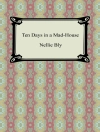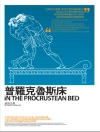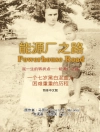“Those who stand for nothing fall for anything.”
—Alexander Hamilton
An illegitimate child, born in the Caribbean, who arrived in America as a near-penniless teenager, Alexander Hamilton did not seem to have much in common with the rest of the Founding Fathers. But the audacious young immigrant quickly proved himself in the cauldron of revolutionary fervor gripping the colonies in the 1770s. After proving himself in the Revolution as an artillery officer and aide to George Washington, Hamilton became one of the foremost architects of the new United States of America. He wrote many of the
Federalist Papers, established the first national bank, and became first Secretary of the Treasury before losing his life in a duel.
In
Hamilton, veteran historians Marie Raphael and Ray Raphael (
The Spirit of ’73: How the American Revolution Began) explain how Hamilton’s strong personality, quicksilver intellect, and taste for combat played into the contentious arguments over what kind of country the young republic would become. The debate between Thomas Jefferson’s decentralized approach to democracy and Hamilton’s belief in a strong federal government is still being argued today.
Vividly written and fully illustrated, including many colorful and rarely seen pieces of art,
Hamilton is a powerful testament to one of the most illustrious figures of American history.
Om författaren
Marie Raphael is the author of two historical novels,
Streets of Gold (Persea 2001) and
A Boy From Ireland (Persea, 2007)
. For decades she has worked closely with her husband, Ray Raphael, frequently acting as research assistant and editor. Together they have co-authored two books,
The Idiots Guide to the Founding Fathers and
The Spirit of ’74: How the American Revolution Began. Marie has taught literature and writing at Boston University, College of the Redwoods, and Humboldt State University. Marie and Ray live in Northern California.
Ray Raphael’s twenty books include
A People’s History of the American Revolution (The New Press, 2001, Harper Perennial, 2002, and The New Press, 2016);
The First American Revolution: Before Lexington and Concord (The New Press, 2002);
Founding Myths: Stories that Hide Our Patriotic Past (The New Press, 2004 and 2014);
Founders: The People Who Brought You a Nation (The New Press, 2009);
Mr. President: How and Why the Founders Created a Chief Executive (Alfred A. Knopf, 2012);
Constitutional Myths: What We Get Wrong and What We Get Right (The New Press, 2013). With Alfred F. Young and Gary B. Nash he edited
Revolutionary Founders: Rebels, Radical and Reformers in the Making of the Nation (Alfred A. Knopf, 2011). His most recent work is
The U. S. Constitution: The Citizen’s Annotated Edition (Vintage, 2016).
In 2013 Raphael received the Bay State Legacy Award from the Massachusetts Humanities Council for his contributions in public history. He has held research fellowships from the National Endowment for the Humanities and the Gilder Lehrman Institute of American History. He is an elected member of the American Antiquarian Society and an associate editor for the
Journal of the American Revolution. His comprehensive, document-based lesson plans on the Constitution are available online at the Constitutional Sources Project (Con Source) website: http://www.consource.org/lessons/












